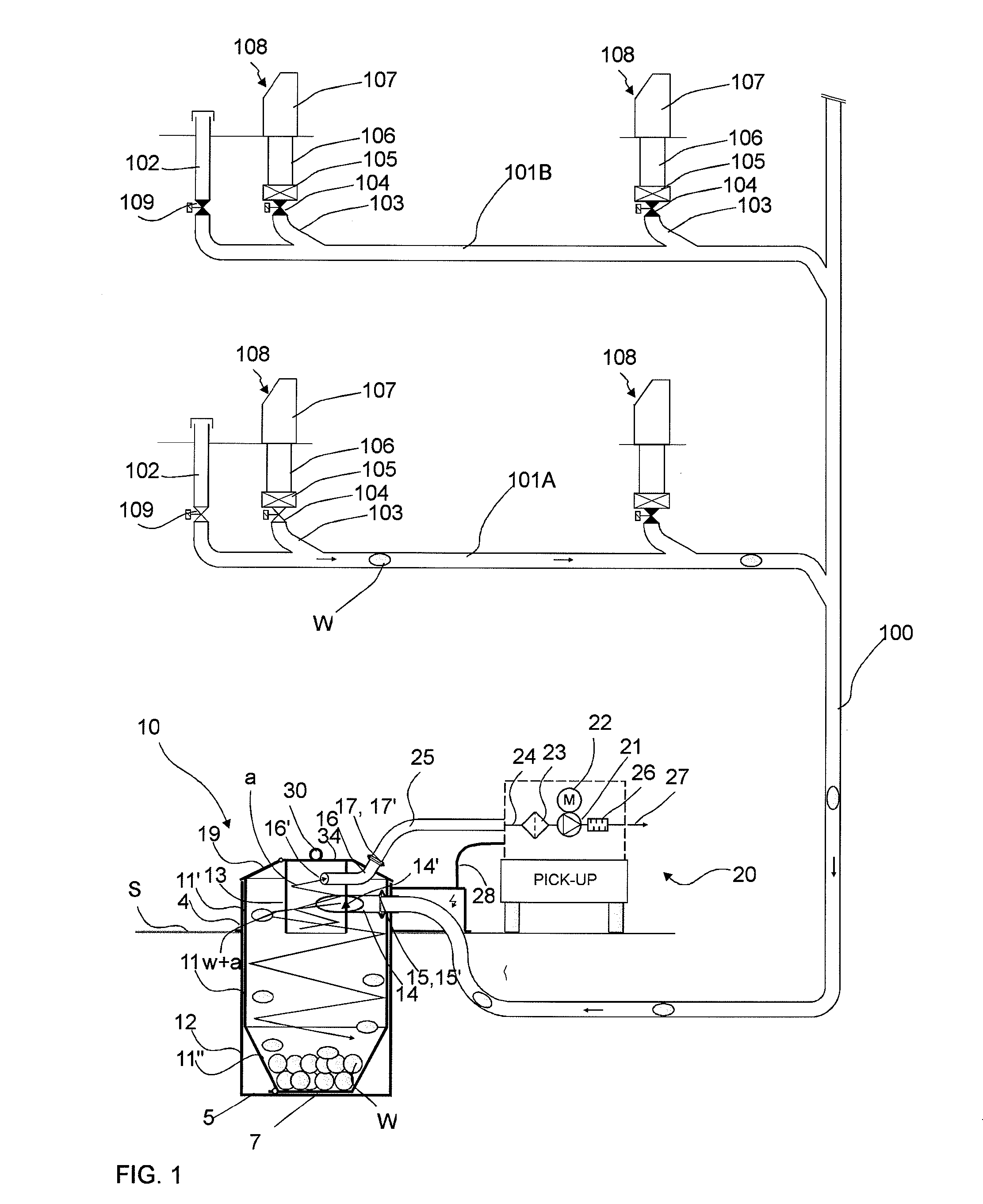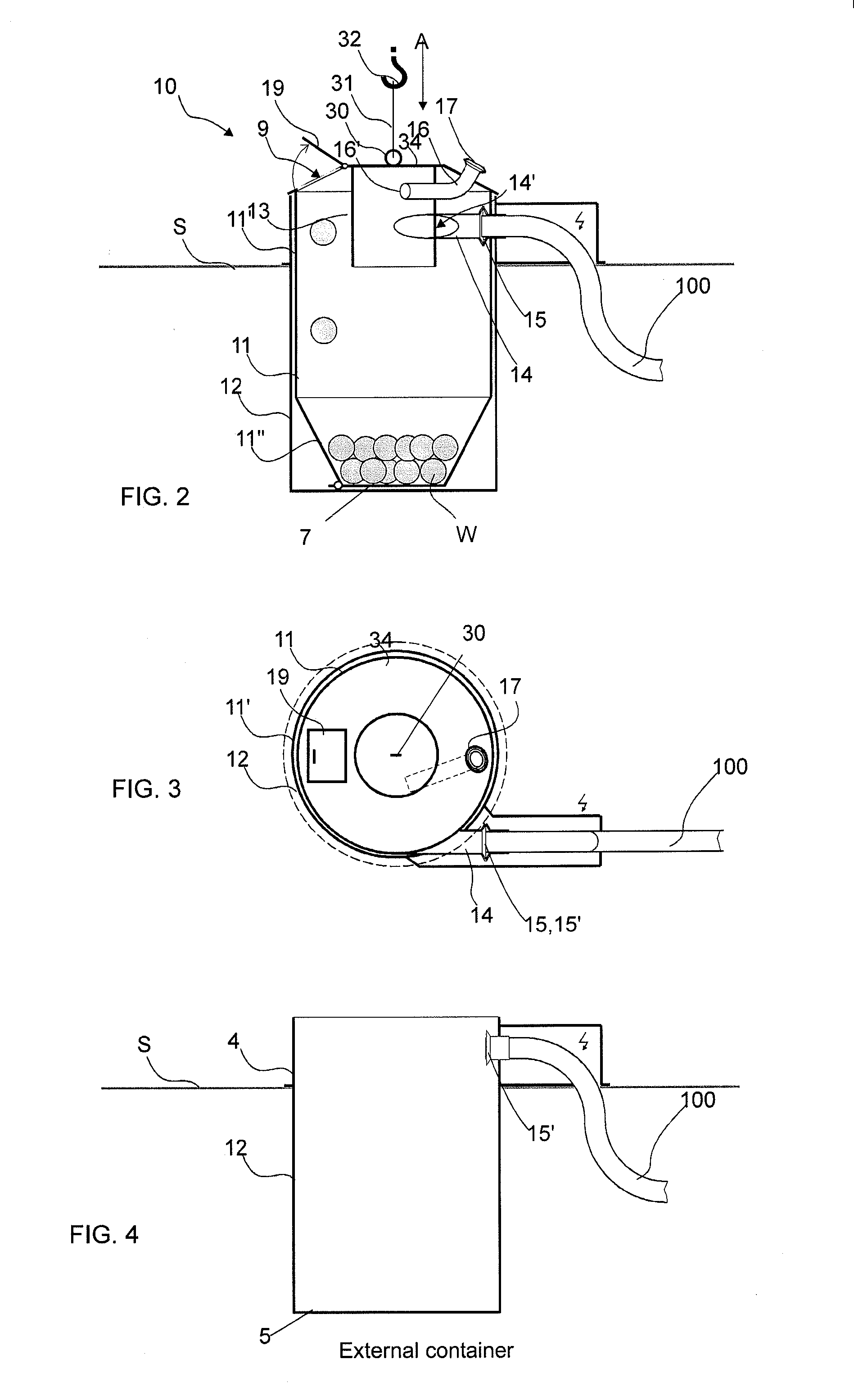Method for handling material in a material conveying system, material conveying system and a separating device for a material conveying system
a conveying system and material technology, applied in the field of pneumatic material conveying systems, can solve the problems of inability to economically viable equip with their own partial-vacuum generating apparatus or with a separating device and a separate container, awkward use of vehicles in cramped spaces, heavy and noisy, etc., to achieve efficient storage, avoid drawbacks of prior-art solutions, and efficiently reduce space requirements
- Summary
- Abstract
- Description
- Claims
- Application Information
AI Technical Summary
Benefits of technology
Problems solved by technology
Method used
Image
Examples
Embodiment Construction
[0028]FIG. 1 presents a part of a pneumatic material conveying system, which part comprises a material conveying pipe 100, along the side of which at least one, typically many, input points 108 are arranged. The input point 108 is a feed-in station of material, more particularly of waste material, intended to be transported, from which station the material, more particularly waste material, such as household waste, or recyclable material intended to be transported is fed into the conveying system. The feed-in station 108 can also be a refuse chute, into which material is fed from input apertures on different floors of a building. The system can comprise a number of feed-in stations 108, from which the material intended to be transported is fed into conveying piping 100, 101A, 101B. By opening and closing a shut-off means, such as a valve means 104, that is possibly in connection with the feed-in station, material can be conveyed from an input point 108 into the conveying pipe 100. T...
PUM
 Login to View More
Login to View More Abstract
Description
Claims
Application Information
 Login to View More
Login to View More - R&D
- Intellectual Property
- Life Sciences
- Materials
- Tech Scout
- Unparalleled Data Quality
- Higher Quality Content
- 60% Fewer Hallucinations
Browse by: Latest US Patents, China's latest patents, Technical Efficacy Thesaurus, Application Domain, Technology Topic, Popular Technical Reports.
© 2025 PatSnap. All rights reserved.Legal|Privacy policy|Modern Slavery Act Transparency Statement|Sitemap|About US| Contact US: help@patsnap.com



